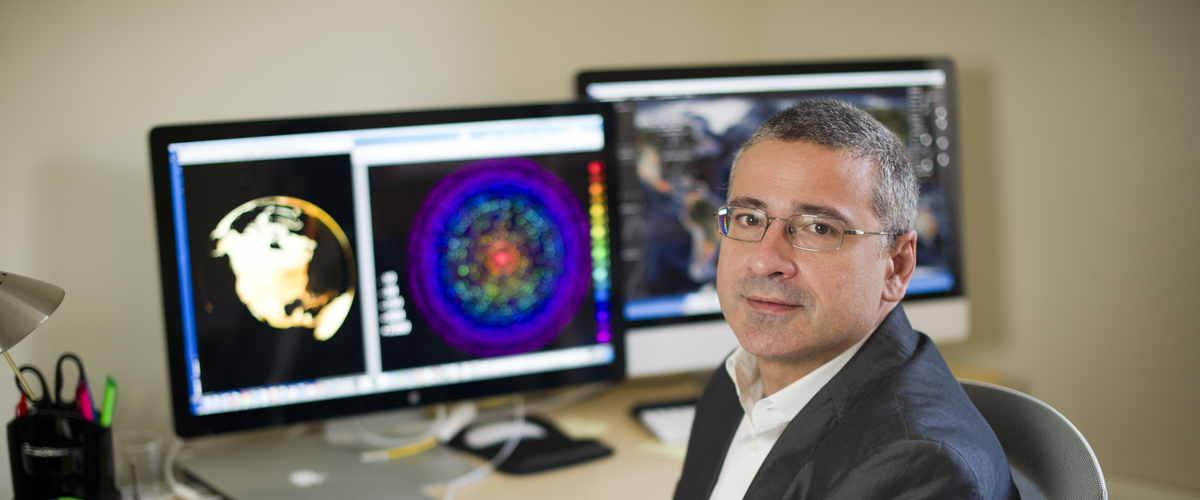by Angela Herring
In 2011, scientists successfully engineered a lethal avian flu virus to be transmissible between birds as well as mammals and possibly humans. The novel virus, a genetically engineered variation of H5N1 avian influenza, sparked an enormous debate among both the research community and the public about how to manage such research and whether it should even be carried out at all.
That’s where Northeastern stepped in. “We thought it was important to provide some hard numbers to the debate,” said Alessandro Vespignani, a world-renowned statistical physicist and the Sternberg Family Distinguished University Professor.
In a paper released Thursday in the journal BMC Medicine, Vespignani and his collaborators provide those hard numbers—and they aren’t terribly reassuring. “This study provides a very accurate modeling approach to assess the probability of containment in the case of accidental escape,” explained Vespignani, who holds joint appointments in the College of Science, College of Computer and Information Science, and Bouvé College of Health Sciences. “Unfortunately there are large chances that the outbreak will not be contained.”
Vespignani and his research team used census data from the city of Rotterdam in the Netherlands to create a computational model that tracked how an experimental virus would spread if it were accidentally released from a facility operating at a biosafety level of 3 or 4. These labs carry out the most health hazardous biological research in the world and are often located in populous urban areas.
The team, which includes collaborators at the Bruno Kessler Foundation in Trento, Italy, looked at the effectiveness of several non-pharmaceutical interventions following a release: isolation of the laboratory; household quarantine of the infected worker; and quarantine of individuals who came into contact with the infected worker.
They examined these containment scenarios in the context of different viruses, ranging in transmissibility from a mild seasonal influenza to one similar to the Spanish flu, which killed nearly 5 percent of the world’s population in 1918.
The results of the simulation suggest a 5–15 percent chance that an accidental escape would not be detected, especially in the case of very transmissible viruses and those where symptoms are not immediately spotted. In addition, they found that containment would depend on the structure and density of the local population surrounding a facility.
“Most BSL labs are in big urban areas,” Vespignani explained. “In those areas we show that the probability of not containing the outbreak is three to five times larger than what it would be in isolated areas.”
While the probability of accidental release is extremely low—there’s only 0.3 percent chance of a virus escaping one of these labs each year—even a single event can translate into a vast public health emergency, said Stefano Merler, one of the researchers who is based at the Kessler Foundation. Moreover, the number of BSL3 and 4 laboratories is increasing, creating a greater combined risk the world over.
As such, this type of research could prove extremely useful for policymakers deciding where to build facilities, Vespignani said. “It’s also useful in weighting the opportunity of authorizing experiments and in defining protocols for containment,” he added.
Originally published in news@Northeastern on November 28, 2013.

